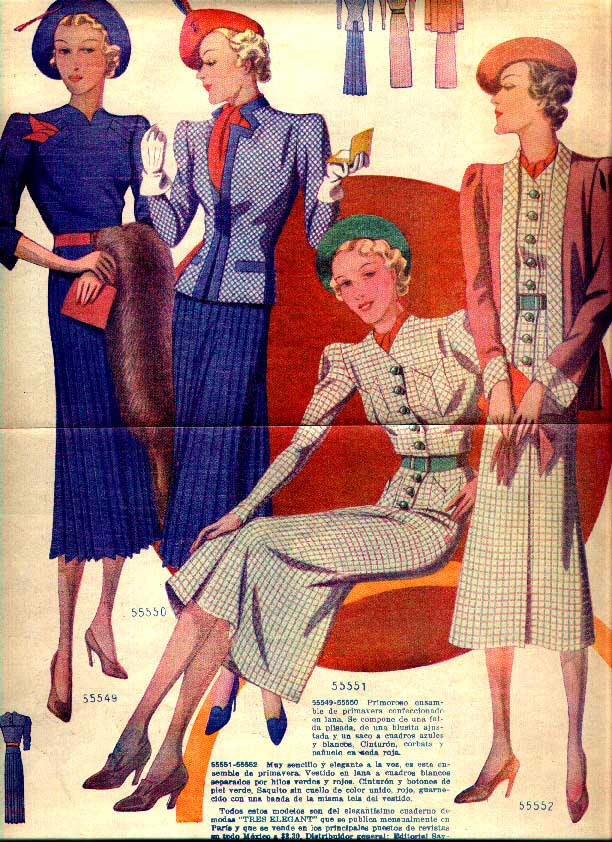Dancing In Style
There
was a general desire for elegant and sophisticated clothes
in the 1930s. This came partly as a reaction against the wild and daring
fashions of the 1920s, when women wore very short dresses, and partly
because in times of financial hardship, such as the 1930s, people often
try harder to appear well dressed and respectable.
Nearly everyone, male and female, wore a hat or cap when
going out, for instance, and men only sat in their shirtsleeves in the
privacy of their own homes. Usually they wore a suit and tie, or
jacket and trousers; even those with little money would try to
have one suit for "Sunday best".
For women, clothes were close fitting and well cut, with
hem lines coming below the knee. Many people still had their clothes
made to measure, but there was a growing demand for a choice of ready
made garments. Poorer people often bought their clothes second hand
and would mend, darn or patch them rather than throw them
away.
Matching jackets and skirts were tailored in pure wool
tweed and were warm and cosy in winter, worn with hand knitted or
ready made woolen jumpers, cardigans or "twin-sets".
Leather coats, very soft, wool lined and dyed attractive colors,
were popular too and quite cheap at about £5.
For summer wear, there were the popular "Macclesfield" silk dresses,
shirt waiter style, with multi coloured delicate stripes. There were
also cotton and linen dresses in plain, striped and floral
materials.
Evening or afternoon dresses were often made of pure silk crepe,
chiffon, taffeta or velvet, cut on the cross to
provide a fitting bodice and a flared skirt. "Ring" velvet was
very fine and soft and so called because a width of it could be pulled
through a wedding ring.
Although most clothes were made of natural fibres, artificial silk and rayon were available, but these were used for the cheaper clothes. (Recollections written down by Kathleen Phillips, 1983)

